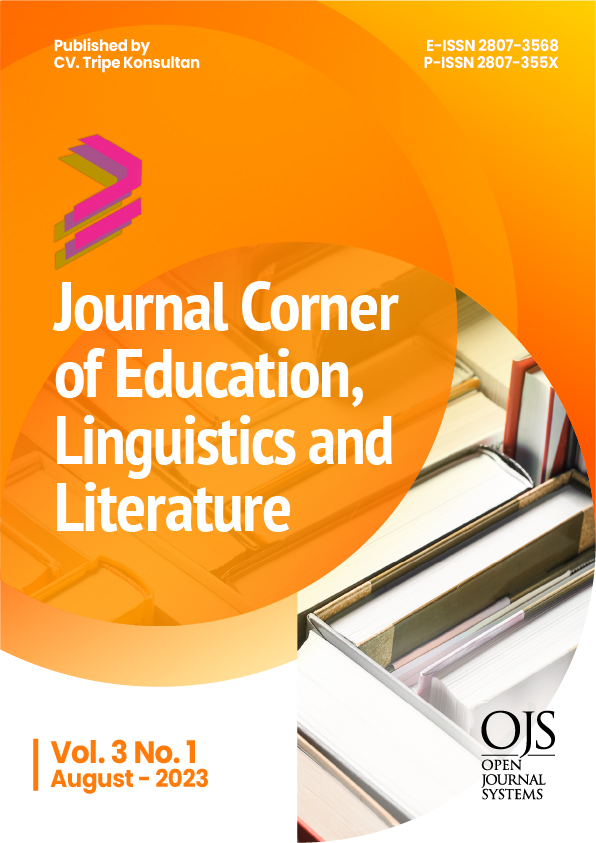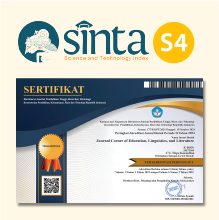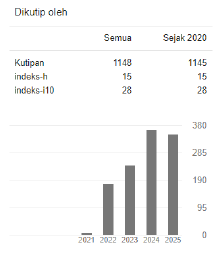The Impact of Technology in Teaching and Learning English as Foreign Language : TESOL Context
 https://doi.org/10.54012/jcell.v3i1.194
https://doi.org/10.54012/jcell.v3i1.194
 Abstract views: 5688
Abstract views: 5688
 PDF downloads: 2113
PDF downloads: 2113
Keywords:
ELT, Multimedia, Technology, TESOLAbstract
This paper is an effort to explore the impact of technology in the context of Teaching and Learning English to Students as their foreign languages. At first, it analyzes the background of the evolving field of technology in English language learning. Second, it delineates the growth of English through technology. Third, it explains the various necessities of technology in learning English. After that, it highlights the possible disadvantages of technology. Next, it explains the importance of striking a balance between technology and traditional teaching and learning. Finally, the researcher concludes that a judicious and balanced use of technology have a positive impact on learning English as a foreign language. Therefore, technology tools can clearly be effective in improving the students’ language and communication skills as the desired pedagogic outcome in the TESOL classroom.
Downloads
References
Altun, M. (2015). Using role-play activities to develop speaking skills: A case study in the language classroom. International Journal of Social Sciences & Educational Studies, 1(4).
Arifah, A. (2014). The Use of Technology in ELT Classroom: Teachers’ perspective. BRAC University, Dhaka, Bangladesh.
Butler-Pascoe, M. E., & Wiburg, K. M. (2003). Technology and Teaching English Language Learners. Allyn and Bacon. https://books.google.co.id/books?id=stpZAAAAMAAJ
Cutter, M. (2015). Using technology with English language learners in the classroom. In Education Masters.
Davies, G., & Hewer, S. (2012). Introduction to new technologies and how they can contribute to language learning and teaching. Information and Communications Technology for Language Teachers (ICT4LT). http://www.ict4lt.org/en/en_mod1-1.htm
Dawson, K., Cavanaugh, C., & Ritzhaupt, A. D. (2008). Florida’s eett leveraging laptops initiative and its impact on teaching practices. Journal of Research on Technology in Education, 41(2). https://doi.org/10.1080/15391523.2008.10782526
Dunwill, E. (2016). 4 changes that will shape the classroom of the future: Making education fully technological’elearningindustry.
Fisk, P. (2019). the Future of Learning will be Dramatically Different in School and througout life.
Genc Ilter, B. (2009). Effect of technology on motivation in EFL classrooms. Turkish Online Journal of Distance Education, 10(4).
Gilakjani, A. P. (2014). A Detailed Analysis over Some Important Issues towards Using Computer Technology into the EFL Classrooms. Universal Journal of Educational Research, 2(2). https://doi.org/10.13189/ujer.2014.020206
Goodwin, K., & Highfield, K. (2012). iTouch and iLearn: An examination of “educational” apps. Early Education and Technology for Children Conference, 14–16.
Graddol, D. (2012). The impact of macro socioeconomic trends on the future of the English language. Department of English, Stockholm University.
Murray, D. (2005). Technologies for second language literacy. Annual Review of Applied Linguistics, 25, 188–201. https://doi.org/10.1017/S0267190505000103
Nomass, B. (2013). The Impact of Using Technology in Teaching English as a Second Language. English Language and Literature Studies, 3. https://doi.org/10.5539/ells.v3n1p111
Patel, C. (2013). Use of multimedia technology in teaching and learning communication skill: An analysis. International Journal of Advancements in Research & Technology, 2(7), 116–123.
Patel, C., Clandinin, D. J., Connelly, F. M., Ybarra, R., Green, T., Fisk, P., Goodwin, K., Highfield, K., Dunwill, E., Rodinadze, S., Zarbazoia, K., & Sharma, P. (2012). Controversies in using technology in language teaching. International Journal of Advancements in Research & Technology, 20(3), 271–275.
Peregoy, S. F., Boyle, O. F., & Martinez, G. (2011). Reading, Writing, and Learning in ESL: A Resource Book for Teaching K-12 English Learners (5th Ed.). TESOL Journal, 2(1). https://doi.org/10.5054/tj.2011.244400
Rodinadze, S., & Zarbazoia, K. (2012). The advantages of information technology in teaching English language. Frontiers of Language and Teaching, 3(5), 271–275.
Sharma, P. (2009). Controversies in using technology in language teaching.
Solikhah, N. A. (2020). Improving Students’ Motivation In English Vocabulary Mastery Through Mobile Learning. Wanastra: Jurnal Bahasa Dan Sastra. https://doi.org/10.31294/w.v12i1.7537
Ybarra, R., & Green, T. (2003). Using technology to help ESL/EFL students develop language skills. The Internet TESL Journal, 9 (3), 1–5.
Downloads
Published
How to Cite
Issue
Section
License
Copyright (c) 2023 Nur Amalia Solikhah

This work is licensed under a Creative Commons Attribution-ShareAlike 4.0 International License.
All articles published in the Journal Corner of Education, Linguistics, and Literature are licensed under the Creative Commons Attribution-ShareAlike License (CC BY-SA).

















